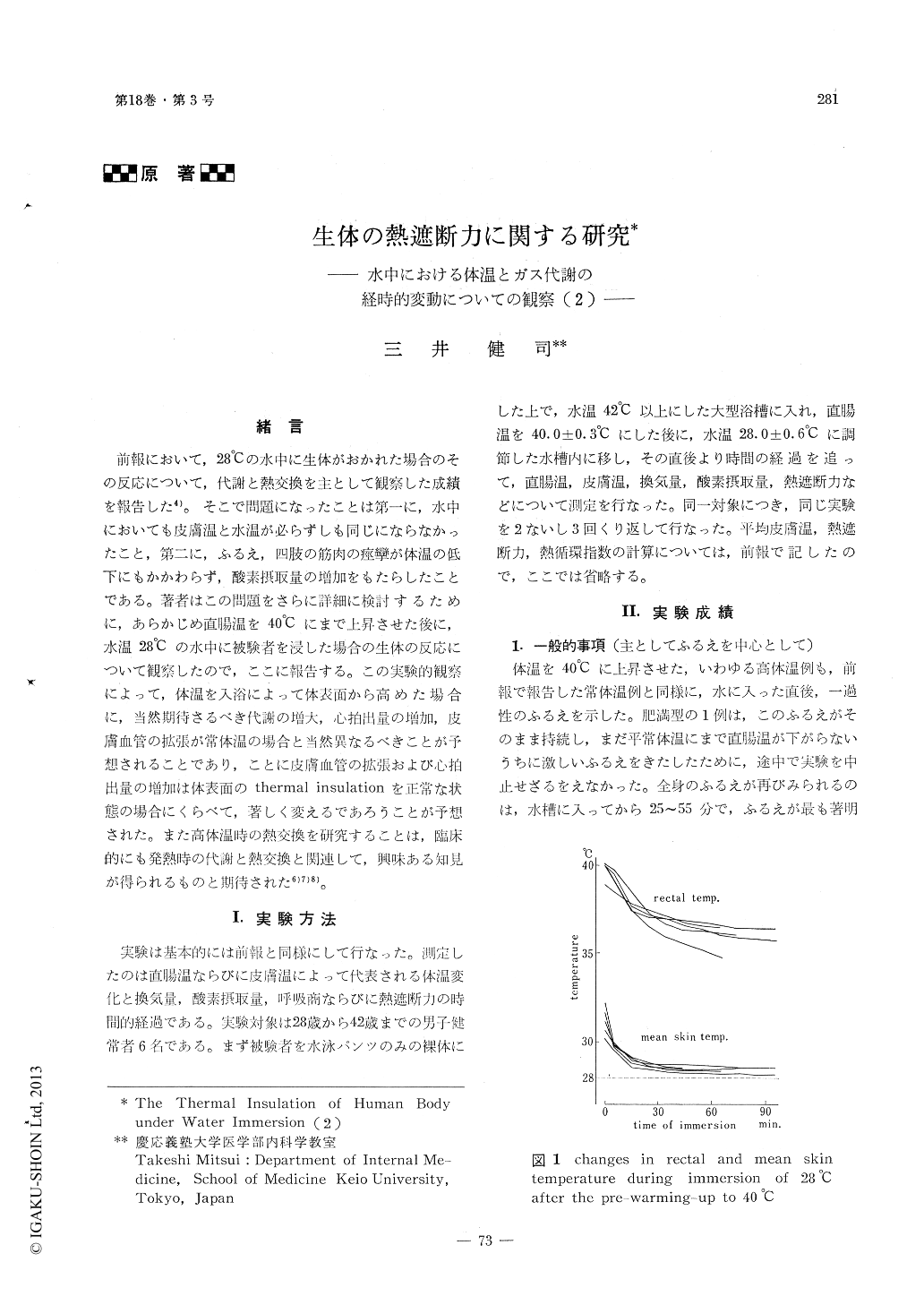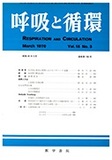Japanese
English
- 有料閲覧
- Abstract 文献概要
- 1ページ目 Look Inside
緒言
前報において,28℃の水中に生体がおかれた場合のその反応について,代謝と熱交換を主として観察した成績を報告した4)。そこで問題になったことは第一に,水中においても皮膚温と水温が必らずしも同じにならなかったこと,第二に,ふるえ,四肢の筋肉の痙攣が体温の低下にもかかわらず,酸素摂取量の増加をもたらしたことである。著者はこの問題をさらに詳細に検討するために,あらかじめ直腸温を40℃にまで上昇させた後に,水温28℃の水中に被験者を浸した場合の生体の反応について観察したので,ここに報告する。この実験的観察によって,体温を入浴によって体表面から高めた場合に,当然期待さるべき代謝の増大,心拍出量の増加,皮膚血管の拡張が常体温の場合と当然異なるべきことが予想されることであり,ことに皮膚血管の拡張および心拍出量の増加は体表面のthermal insulationを正常な状態の場合にくらべて,著しく変えるであろうことが予想された。また高体温時の熱交換を研究することは,臨床的にも発熱時の代謝と熱交換と関連して,興味ある知見が得られるものと期待された6)7)8)。
Six healthy male adults were first immersed in the warm water-bath, in which the tem-perature was kept at approximately 42℃, to elevate the subjects' rectal temperature up to 40℃. Following this procedure the subjects were transferred to the other temperature-regulated water-bath to expose the subjects to water of 28℃.
The measurements were conducted with re-gard to the subjects' rectal temperature and skin temperature, the ventilation and the oxygen consumption. The thermal insulation, the heat debt and the thermal circulation index were calculated to discuss the body heat exchange and the peripheral blood flow.
Increased ventilation and oxygen consump-tion started to decrease when the subjectswere exposed to the cold water. The thermal insulation was increased gradually in 35~45 minutes to reach its maximum value.
During the cold water immersion the venti-lation and the oxygen consumption again increased.
The obese subjects and the thin subjects revealed different response to the cold water immersion. There was also any significant individual difference of the response.

Copyright © 1970, Igaku-Shoin Ltd. All rights reserved.


